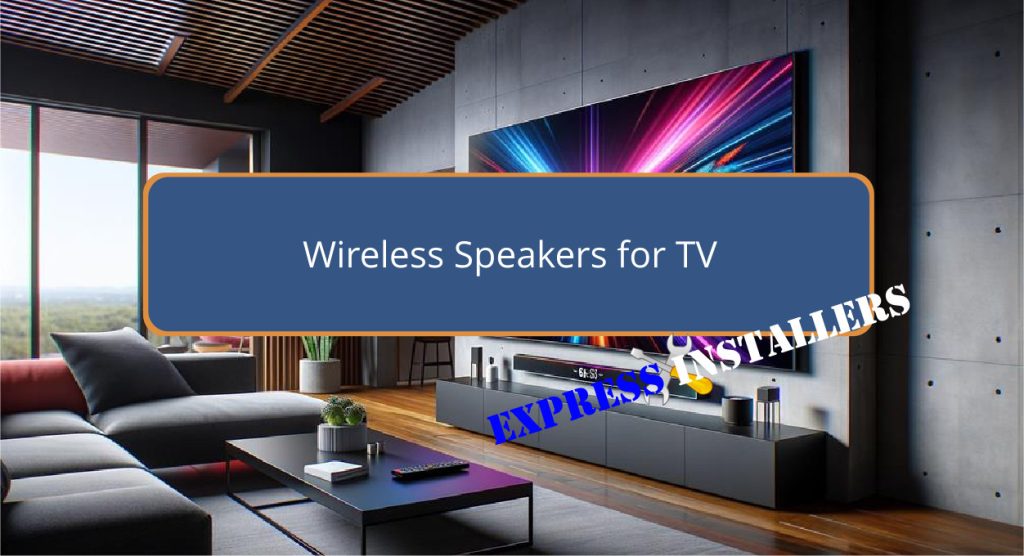
Wireless speakers are a great option for enhancing the sound quality of your TV. When selecting a model, consider connectivity options such as Bluetooth, Wi-Fi, or HDMI-ARC, which guarantee effective audio streaming.
Additionally, look for speakers with audio calibration features, which adjust the sound output based on your room’s acoustics.
For peak performance, installation should involve placing speakers at an ideal distance and angle from the TV and adjusting audio settings via the TV menu.
Continued exploration can uncover the perfect sound solution for your home entertainment setup.
Quick Summary
- Wireless speakers provide clear, immersive audio, enhancing the TV watching experience.
- Ensure compatibility between the wireless speaker system and the TV for optimal functionality.
- Consider models with Bluetooth or Wi-Fi connectivity for easy audio streaming.
- Installation involves placing speakers at ideal distances and angles, linked via appropriate connections.
- Advanced features like audio calibration and multi-room setups can significantly improve sound quality.
Choosing the Right Model
When selecting a wireless speaker for your TV, it is important to consider the range of connectivity options available, such as Bluetooth, Wi-Fi, or HDMI-ARC, to guarantee compatibility with your television system.
Effective connectivity ensures seamless audio streaming and enhances user experience.
Additionally, take into account the audio calibration features of the speaker.
Audio calibration allows the speaker to adjust its output based on the acoustic characteristics of the room, providing optimised sound quality tailored to your specific environment.
This can greatly enhance your viewing experience by ensuring that sound is clear, well-balanced, and immersive.
Hence, prioritising these connectivity options and audio calibration capabilities is key when choosing the right model for your needs.
Installation and Setup Tips
Proper installation and setup are crucial for maximising the performance of wireless speakers for TV.
Ensuring your speakers are optimally positioned and correctly connected enhances sound quality and user experience.
Here are key steps to keep in mind:
- Speaker Positioning and Sound Optimisation: Place speakers at an ideal distance from the TV and angle them towards the seating area to improve audio clarity and create an immersive sound environment.
- Connectivity Options: Utilise the appropriate connection method—optical, HDMI-ARC, or Bluetooth—based on your TV’s outputs and speaker capabilities.
- Compatibility Requirements: Always check that your wireless speakers are compatible with your TV’s audio system to avoid any connectivity issues or subpar performance. Adjust audio settings via your TV menu for optimal sound.
Troubleshooting Common Issues
Troubleshooting common issues with wireless speakers for TVs typically involves checking the power source, connections, and volume settings to confirm proper functionality.
When persistent problems occur, certain targeted actions are pivotal for resolving them:
- Connection Troubleshooting: Confirm the speaker is correctly paired, either through Bluetooth or a wired connection. Regularly check and update the compatibility settings.
- Firmware Updates: Keeping the speaker’s firmware up-to-date is crucial for peak performance and compatibility with the latest TV models.
- Audio Sync Adjustments: Address audio lag issues by fine-tuning the sync settings on both the TV and the wireless speaker, ensuring the sound is perfectly aligned with the visuals.
Enhancing TV Sound Quality
Wireless speakers greatly enhance TV sound quality by delivering clear, balanced, and immersive audio experiences.
With advanced sound bar options, these speakers are designed to boost audio performance notably.
They feature full-range drivers and centre tweeters that guarantee natural-sounding audio, essential for both movies and music.
Special audio modes, such as Dialogue mode, enhance clarity specifically for spoken words, making it easier to follow conversations in films and TV shows.
The convenience of Bluetooth connectivity also allows users to stream audio seamlessly from various devices, enriching the listening experience.
Additionally, technologies like SimpleSync enable multi-room audio setups, allowing synchronised sound across different rooms with minimal effort, thanks to straightforward set-up options like HDMI ARC or optical connections.
Frequently Asked Questions
Can You Connect a TV to Wireless Speakers?
Yes, connecting a TV to speakers wirelessly is possible through Bluetooth or Wi-Fi, depending on the connection methods and speaker compatibility. Make sure your TV supports these features or use an external transmitter.
What Is the Difference Between a Bluetooth Speaker and a Wireless Speaker?
Bluetooth speakers connect via Bluetooth, typically offering portability and convenience but may have limited connection stability and audio quality. Wireless speakers, using Wi-Fi, support higher-quality sound and broader connectivity for multi-room setups.
Are Speakers or Sound bars Better for TV?
The choice between speakers and sound bars for TVs largely depends on room layout and desired audio quality. Sound bars offer simplicity and space efficiency, while speakers provide superior sound customisation and a broader audio range.
How Do Wireless Home Speakers Get Power?
Wireless home speakers are powered either by built-in rechargeable batteries or by direct connection to a power outlet. Battery types vary, and some models use charging stations for convenient power replenishment.
Conclusion
To sum up, selecting the appropriate wireless speaker for television involves careful consideration of model specifications, installation ease, and key feature analysis.
Effective troubleshooting of common issues enhances the user experience greatly.
By meticulously comparing features and addressing potential problems, one can greatly enhance the audio quality of their television setup.
This approach not only optimises auditory enjoyment but also guarantees a seamless integration of technology into the home entertainment system.
